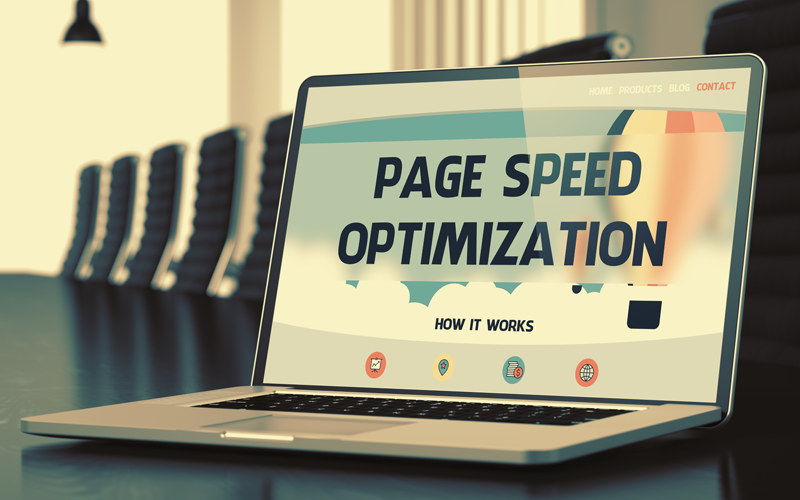How Does Site Speed Affect SEO?

Site speed is everything. If you want your site to be up there with the best of the best, it needs to be fast. Not only do slow loading pages drive customers away but they also negatively affect SEO. Site speed influences SEO, so a fast site will help your website to rank on SERPs. In this article, we explore the question: how does site speed affect SEO? Better still, we’ll help you find ways to improve your page load time and subsequently improve your SEO. If you want to know more about this, keep reading!
Why Does Site Speed Matter to SEO?
So, why does site speed impact SEO? Site speed refers to how fast a page on your website loads. Essentially, the faster it loads, the better. The slower it loads the more likely customers are to get fed up and click away from your site. Things such as code, images and your host can affect site speed. If a page is slow, you’re not only missing out on conversions but you’re also affecting your search engine rank. Below, we explore how site speed impacts SEO.
Site Speed is a Ranking Factor
Google takes your site speed into account when ranking. In other words, if your site speed is slow, you won’t rank as high on SERPs. This is the case for both mobile and desktop search.
Loading time is a key reason why users abandon your page. If a page takes too long to load, users grow impatient and will find the content elsewhere. When ranking, Google pays attention to page abandonment. This means that if you’re ranking high for something but getting lots of page abandonment, Google will adjust the ranking of your site accordingly. When your site is abandoned, Google assumes that visitors cannot find what they want on your site and lowers your page on SERPs.
How it Affects Your Bottom Line
Studies show that almost 50% of users expect a site to load in 2 seconds or less, and they tend to leave sites that take longer than 3 seconds. Most users who experience issues with a site say they won’t return to the site and try again later. Almost 50% of those users say they would share a negative experience with a friend, further impacting your website and business.
Research shows that a 2-second delay in loading time can increase your bounce rate by as much as 100%. This means that slow sites will lose you a ton of visitors and fewer people will click on your ads or buy your product.
Even a 1-second delay in page speed could cause 7% of your visitors to bounce. While this doesn’t sound like much, if you’re an e-commerce site making £100,000 per day, that’s a loss of £2.5 million potential sales per year.
How to Check Your Site Speed
If you want to check your site speed, there are a few tools to help you.
Page Speed Insights
Page Speed Insights is a tool from Google that allows you to see your website as they do. All you need to do is enter your domain and click Analyse. You’ll then be given some suggestions on how to improve your site speed.
Org
With Org, you enter your domain and choose a test server location. If you choose a server close to where your website is hosted, the speed will be quicker and you won’t get an accurate reading. For best results, choose a test server that is geographically further away from where your site is hosted. You can also choose which browser you want to test your site with, allowing you to check that your site loads quickly across all browsers.
GT Metrix
GT Metrix analyses your site and gives you recommendations on how to improve your speed. One of the common suggestions is to place JavaScript at the end of your code so that visitors don’t see a blank screen while it’s loading.
How Can You Improve Your Site Speed?
While some people use page speed tools to improve speed, there are some common things you can do to improve it before splashing out on these. Below, we explore them further.
Optimise Images
The first thing to do is optimise your images. Pay attention to the format, compression and size of each image on your website. There are various plugins to make this process easier; these optimise each image automatically as you upload it to your page.
Minify CSS, HTML and Javascript
Most site owners will know that without code, a website won’t function. However, minifying the code can improve your site speed. Doing so will compress the file size, enabling you to get the functionality without the large size.
Use a Content Delivery Network
A content delivery network, or CDN, stores copies of your site on servers across the world. When a user visits your site, the CDN will pull copy from the server closest to the visitor to minimise load time.
Use Browser Caching
Browser caching enables computers to store specific files used to view your site. This means that when a visitor returns, some of the files are already there. This improves site speed because the PC doesn’t have to download them again.
So, how does site speed affect SEO? Essentially, Google prioritises sites with a low bounce rate. If your site takes a long time to load, users will become impatient and abandon the page to take their business elsewhere. To ensure this doesn’t happen, keep your site speed as quick as possible by using the tips and tools above. This way, you’ll increase your conversions and appear higher on SERPs.


